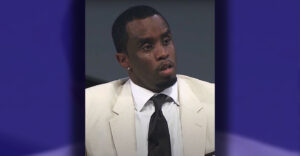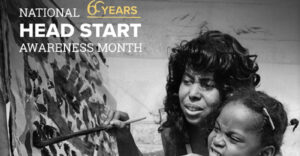Severe weather is possible in the Chicago area Tuesday afternoon and evening, according to the National Weather Service.
A considerable amount of uncertainty exists about these potential storms, but damaging hail and a few tornadoes are possible, and meteorologists will be monitoring changing weather conditions.
A tornado with wind gusts from 90 to 100 mph that tore through Belvidere Friday night and led to a fatal roof collapse. The National Weather Service also reported a tornado traveled 1.6 miles from Lombard to Addison in DuPage County on Friday night, and on the same night in downstate Crawford County, a tornado touched down near New Hebron, killing three people.
Saturday evening, Gov. J.B. Pritzker issued an emergency disaster proclamation to unlock immediate assistance and provide public safety support for communities across Illinois impacted by Friday night’s tornadoes and severe weather.
During this time of year when volatile weather can often occur, here are 10 important things to know about tornadoes:
The National Weather Service issues a tornado watch when conditions could lead to the development of tornadoes. A tornado watch can last several hours and will be issued in advance of the actual formation of a tornado. During this time, residents of the area should be prepared to seek shelter if conditions worsen.
A tornado warning takes place when a tornado has already formed and been detected by radar or sighted by spotters. In this event, people in the designated area should seek shelter immediately. A tornado warning can be issued without a watch being issued first. Warnings are normally issued for about 30 minutes, according to the National Weather Service.
As of Monday morning, there were no tornado warnings in effect in Illinois because there were no storms capable of producing tornadoes anywhere in the state, said Jeffrey Frame, professor of atmospheric sciences at the University of Illinois.
During a tornado warning, residents will be alerted by a siren sounding a single tone. In Illinois, these sirens are tested at 10 a.m. on the first Tuesday of every month. If the possibility of severe weather exists on this date, officials may change the test time.
Illinois averaged 54 tornadoes per year based on 1991-2020 data. But there were none in 1919 and 1933, and as many as 124 in 2006.
Kevin Doom, meteorologist with the National Weather Service, said the state with the most tornadoes per year has historically been Texas. In 2022, the state had 159 tornadoes.
Spring is the peak season for tornadoes, and April, May, and June are the most common months, but they can happen any time there are thunderstorms with strong winds.
Although tornadoes can form at any time of day, most tornadoes take place in the afternoon and evening between 4 and 9 p.m.
Nearly 60% of all tornadoes between 1950 and 2020 in Illinois occurred between 3 p.m. and 8 p.m. and most tornado-related injuries occurred between 2 and 5 p.m., according to a study conducted at the University of Illinois.
Tornadoes come from supercell thunderstorms, and a tornado’s power depends on the power of the storm.
They often develop from severe thunderstorms in warm, unstable air ahead of cold fronts. When warm and cool air combine in a storm, warm air rises and cool air falls. This vertical movement creates spin, which leads to the tornado’s funnel-like cloud.
Robert Trapp, also a professor of atmospheric sciences at University of Illinois, said that the weather system that brought storms over the weekend is very similar to the weather system that is moving through the U.S. right now — from Iowa into Illinois.
He is with a team of researchers called PERiLS, which is working to understand these storm patterns. They focus on pinpointing where tornadoes may form in thunderstorm clouds that span hundreds of miles.
But tornadoes can strike any place at any time, explained Frame. Tornado formation is a result of geographic conditions — large bodies of water that provide a source of moisture, like the Gulf of Mexico, can start the process.
The National Weather Service rates tornadoes on the Enhanced Fujita scale from an EF-0 to an EF-5. The scale assigns each tornado a rating based on wind speed and related damage. The EF-0 storms have a top 3 second gust speed of 65 to 85 mph, while EF-5 storms reach over 200 miles per hour.
The National Weather Service rated the storm that caused a roof to collapse in Belvidere an EF-1 with wind speeds between 90 and 100 mph.The storm that traveled from Lombard to Addison was also rated an EF-1.
During a tornado warning, experts recommend going to a shelter’s lowest level — a basement, closet or center hallway. Windows should be avoided.
If you are in a vehicle during a tornado, the National Weather Service recommends that the best course of action is to drive to the nearest place of shelter.
Skyscrapers aren’t immune to tornadoes, as some Chicago residents may believe. If you’re in a tall building during a severe weather event, it is essential to move to the ground level in a place with no windows.
“Plan ahead,” said Trapp. “If you know that your area is a heightened risk, maybe rethink your plans to go to the movies.”
Tornado experts recommend making an emergency preparedness kit for your home.
The following items are applicable to all human-made or natural disasters:
- Nonperishable food and water for several days
- First aid kit, prescription medication, hygiene products
- Flashlight with extra batteries
- Battery-powered or hand crank radio to receive weather information
- Phone and phone chargers
- Cash
- Change of clothing
- Sleeping bag or blankets
- Important documents including identification, insurance, etc.
The Federal Emergency Management Agency also recommends preparing a communication plan in case of a major weather event. The National Weather Service advises organizations to hold routine tornado drills and practice emergency procedures regularly.
Pets should be placed in crates or kennels and brought with you to your designated tornado-safe area, according to the American Humane Society. If you are able to evacuate, the organization recommends you take your pets with you.
Before the storm, make your tornado shelter safe for pets by removing dangerous items. Also put together a pet emergency preparedness kit in advance of severe weather.
Illinois has experienced two of the worst tornadoes in the nation’s history: the infamous Tri-State tornado of March 18, 1925, which resulted in 695 deaths, 2,000 injuries, and $130 million in property damage; and the Mattoon tornado of May 26, 1917, which resulted in 101 deaths, 638 injuries, and $55 million in property damage.
It’s been a number of years since a significant tornado has hit the immediate Chicago area.
The National Weather Service meteorologist confirmed that there is a high level of uncertainty around Tuesday night’s weather. While there is a possibility no thunderstorms will form Tuesday evening, he said that if there are storms, they are likely to be severe.
He encouraged the public to keep a “close eye” on the weather Tuesday night.
“Assume that the storms will pop up,” Doom said. “Because if they do, they will be on the stronger side.”
The Tribune will continue to monitor changing weather conditions throughout the day on Tuesday. Check chicagotribune.com/weather for the latest news.







